Are you looking for the best investment plan in Singapore?
With so many options out there, it can be overwhelming to choose the right one for you.
ILPs, or Investment-Linked Policies, are a popular investment option in Singapore.
They provide the opportunity to invest in a range of assets while also offering insurance coverage.
But not all ILPs are created equal, and choosing one that fits your financial goals and risk tolerance is important.
In this article, I’ll be sharing our top picks for the best ILPs in Singapore based on factors such as fees, performance, and flexibility.
Picking the wrong one could lead to years of regret.
So whether you’re a seasoned investor or just starting out, read on to find the ILP that’s right for you.
Comparison of Investment Plans in Singapore
Firstly, let’s have an overview of the ILPs available in Singapore for a quick comparison:
| Policy | Minimum Investment | Minimum Investment Period (MIP) (Years) | Regular or Single Premium? | Source of Funds | Compulsory Fees & Charges | ROI Calculated | Type of Funds | Bonus | Premium Holidays | Partial Withdrawals | Top-Ups | Vary Premiums | Basic Coverage | Riders Available |
| Prudential PRUSelect Vantage | $750/month | 5 | Regular Premium | Cash | First 2 years: 4.75% p.a. During MIP: 4.75% p.a. + $144/year After MIP: 0.75% p.a. + $144/year |
270.89% | Retail | Up to 20% | Unofficially, only after 2 years, length subject to your account value | Yes, $1,000 minimum | Yes, minimum $1,000 | Reduce only, after 24 months | Death | -Early Critical Illness (ECI) Waiver -Critical Illness (CI) Waiver -Payer Security -Payer Security Plus -Early Payer Security -PRUSmart Lady -Fracture Care PA -ECI |
| HSBC Life Wealth Accelerate (Previously AXA Wealth Accelerate) | $300/month | 10 | Regular Premium | Cash | Up to 4.4% p.a. | 285.00% | Retail + Accredited Investor | Up to 200% | Yes, after 2 years, up to 60 months | Yes, $1,000 minimum | Yes, minimum $100 monthly | No | Death Terminal Illness |
NA |
| HSBC Life Pulsar (Previously AXA Pulsar) | $300/month | 5 | Regular Premium | Cash | ~6% p.a.+ $10 per month | 293.98% | Retail + Accredited Investor | Up to 168% | Yes, 3 – 5 years, depending on MIP | Yes, $1,000 minimum | Yes, minimum $5,000 | Yes, after 36 months | Death | NA |
| Great Eastern GREAT Wealth Advantage | $200/month | 10 | Regular Premium | Cash | During MIP: Up to 4.75% After MIP: Up to 2.25% |
330.55% | Retail | Up to 60% | Yes, unlimited after 10 years, otherwise unofficially, length subject to account value | Yes, $500 minimum | Yes, minimum $1,000 | Reduce only, after 10 years | Death Terminal Illness Total Permanent Disabiity |
-CI -Disability |
| Prudential PRUSelect | $350/month | 10 | Regular Premium | Cash | First 2 years: 4% p.a. After 2 years: Up to 4.7% p.a. + $84 per year |
357.00% | Retail | Up to 10% | Unofficially, only after 2 years, length subject to your account value | Yes, $1,000 minimum | No | Yes, amount subject to Prudential | Death | -ECI Waiver -CI Waiver -Payer Security -Payer Security Plus -Early Payer Security -PRUSmart Lady -Fracture Care PA -ECI |
| AIA Pro Achiever | $200/month | 10 | Regular Premium | Cash | Up to 5.65% p.a. | 412.90% | Retail | Up to 10% | Unofficially, length subject to account value | Yes, $1,000 minimum | Yes, minimum $1,000 | Reduce only, after 11 years | Death | -Critical Protector Waiver of Premium -Early Critical Protector Waiver of Premium -Early Critical Protector Payor Benefit -Payor Benefit -Payor Benefit Comprehensive Special |
| Tokio Marine #goTreasures | $500/month | 10 | Regular Premium | Cash | Up to 6.9% p.a. | 448.60% | Retail + Accredited Investor | Up to 62% | Unofficially, only after 2 years, length subject to your account value | Yes, $500 minimum | Yes, minimum $50 monthly | Yes, after 36 months | Death | NA |
| Tokio Marine goClassic | $630/month | 5 | Regular Premium | Cash | During MIP: 6.75% p.a. After MIP: 1.35% p.a. |
458.76% | Retail + Accredited Investor | Up to 47% | Unofficially, only after 2 years, length subject to your account value | Yes, $500 minimum | Yes, minimum $50 monthly | Yes, after 24 months | Death | -Cancer Waiver -ECI Waiver -CI Waiver -Payer Benefit -Spouse Rider -Enhanced Payer Benefit -Enhanced Spouse Rider |
| Manulife InvestReady III | $25,000 or $200/month | 5 | Single Premium Regular Premium |
Cash | During MIP: 1.4% to 2.5% p.a. After MIP: 0.7% to 1% p.a. $5/month (If you’re investing below certain amounts) |
499.25% | Retail | Up to 60% | Unofficially, length subject to account value | Yes, $500 minimum | Yes, minimum $2,500 | Yes, after 12 months | Death Terminal Illness |
-TI Waiver -CI Waiver -Cancer Waiver -TPD Waiver |
| Singlife Savvy Invest | $200/month | 3 | Regular Premium | Cash | First 10 years: 2.5% p.a. After 10 years: 0.65% p.a. |
516.63% | Retail + Accredited Investor | Up to 60% | Unofficially, length subject to account value | Yes, $500 minimum | Yes, minimum $1,000 | Yes, after 36 months | Death Terminal Illness |
-Payer Premium Waiver -CI Waiver |
| FWD Invest First Plus | $300/month | 15 | Regular Premium | Cash | Up to 3% of your annualised premium * N | 542.00% | Retail + Accredited Investor | Up to 34% | Unofficially, length subject to account value | No | Yes, minimum $3,000 | No | Death | NA |
| Manulife Manulink Investor (II) | $5,000 | 0 | Single Premium | Cash, SRS, CPF | Cash/SRS: 3% premium charge + 1.95% p.a CPF: Up to 1.95% p.a. |
NA | Retail | No | No | Yes, $500 minimum | Yes, minimum $500 per subfund | No | Death Terminal Illness |
NA |
| NTUC Income WealthLink | $10,000 | 0 | Single Premium | Cash, SRS | 3.5% premium charge + up to 2% p.a. | NA | Retail | No | No | Yes, $500 minimum | Yes, minimum $2,500 | No | Death | NA |
| HSBC Life Wealth Invest (Previously AXA Wealth Invest) | $10,000 | 0 | Single Premium | Cash, SRS, CPF | Cash/SRS: Up to 5% premium charge CPF: Up to 1.6% p.a. |
NA | Retail + Accredited Investor | No | No | Yes, $100 minimum | Yes, minimum $500 | No | Death | NA |
| AIA Invest Easy | $12,000 | 0 | Single Premium | Cash, SRS, CPF | 3% premium charge + up to 3% p.a. | NA | Retail | No | No | Yes, $1,000 minimum | Yes, minimum $300 monthly | No | Death | NA |
| Prudential PRUSelect Vantage Premier Review | $50,000 | 2 | Single Premium | Cash, SRS | 2.5% premium charge + 0.8% p.a. | NA | Retail | Up to 1.25% | No | Yes, $1,000 minimum | Yes, minimum $20,000 | No | Death | NA |
| Great Eastern Great Prestige Portfolio | $20,000 or $250/month | 0 | Single Premium Regular Premium |
Cash, SRS | 3% premium charge + up to 1.7% p.a. | NA | Retail | No | No | Yes, $1,000 minimum | Yes, minimum $500 | Yes | Death | NA |
| HSBC Life Wealth Harvest (Previously AXA Wealth Harvest) | $300/month | 0 | Regular Premium | Cash | 5% premium charge + 3.5% p.a. | NA | Retail + Accredited Investor | Up to 35% | Unofficially, length subject to account value | Yes, $250 minimum | Yes, minimum $50 | Reduce only | Death Terminal Illness |
NA |
| Great Eastern GREAT Invest Advantage | $5,000 or $100/month | 0 | Single Premium Regular Premium |
Cash, SRS, CPF | Cash/SRS: 3% premium charge + up to 3.25% p.a. CPF: Up to 3.25% p.a. |
NA | Retail | No | No | Yes, $500 minimum | Yes, minimum $1,000 | No | Death Terminal Illness |
NA |
| Prudential PRULink InvestGrowth | $6,000 or $300/month | 0 | Single Premium Regular Premium |
Cash, SRS, CPF | Cash/SRS: Up to 4.5% ILP premium charge + up to 5% fund premium charge + up to 1.5% p.a. CPF: 0% ILP premium charge + up to 5% fund premium charge + up to 1.5% p.a. |
NA | Retail | No | No | Yes, $1,000 minimum | Yes, minimum $2,000 | Increase only | Death | NA |
Next, a quick understanding of how we broke down certain stuff above.
- Compulsory Fees & Charges: In this column, the value you see after the term “up to” is often overstated. This is because some ILPs allocate your units to different accounts and charge them differently. For ease of calculation, we lumped everything together where possible through all policies.
- Compulsory Fees & Charges (Update): We were informed that our calculations for some of the fees & charges were incorrect. To clarify, we included fund management charges in our calculations if the fees were not already taken into account when calculating fund-level returns. This way, it’s a fair comparison across as it takes into account net fees.
- ROI Calculated: This column measures the ROI over 30 years through our calculations. We did this for popular ILPs that are often recommended to our readers. The ROI uses the lowest possible fee tier for each ILP. Most will be 20 years of regular investing with 10 years of additional accumulation, while there are instances where 30 years of regular investing is required.
- Bonus: We only included Welcome Bonuses.
- Premium Holidays: If there is a “Yes”, the ILP offers an official premium holiday with no charges incurred. If it’s “Unofficial”, you can stop paying premiums (if necessary) while incurring charges. This will last as long as you have enough funds in your policy to pay for the charges.
Now that you have gotten a birds-eye view of some key terms and factors to look out for when choosing an ILP, the best way to pick a suitable one is to know what you want to take away from this plan – whether it is high returns, flexibility to add-on for greater coverage, etc.
Best ILP in Singapore
In our opinion, we believe the best ILP in Singapore is the Manulife InvestReady III.
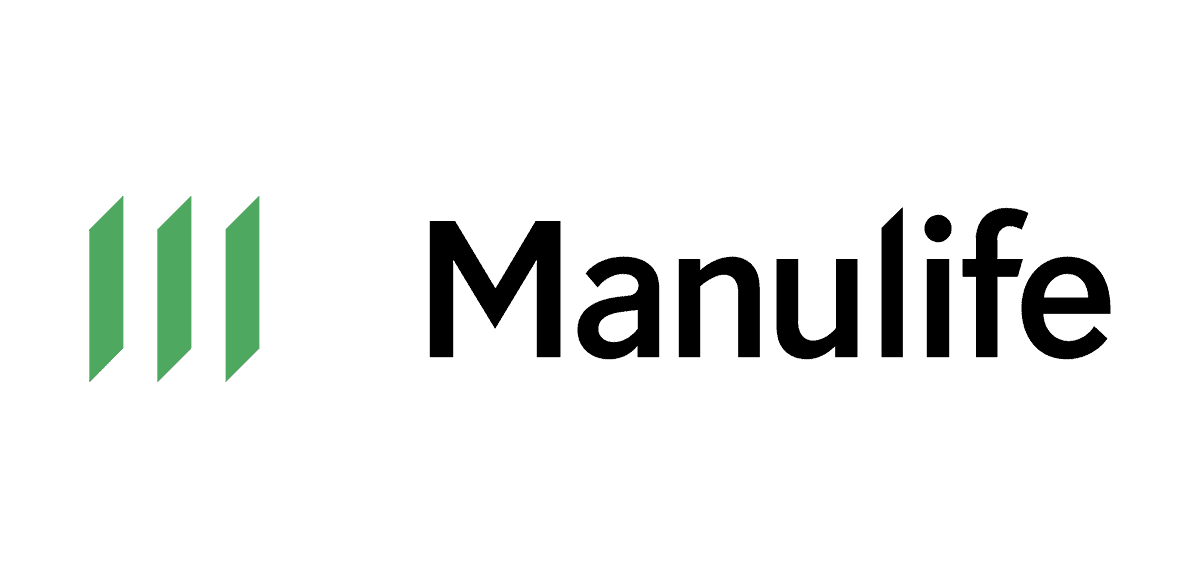
It has a low minimum investment amount of just $200/month if you opt for the 20-Year Flexi 10 plan – which means that you have to invest minimally for 10 years – and this is the lowest entry amongst all the ILPs we’ve compared!
Now, just because there is a minimum investment period (MIP) of 10 years to hit the minimum, it doesn’t mean that’s your only choice.
In fact, there are 9 commitment periods for you to choose from, and the shortest commitment period is just 5 years!
Fees-wise, it offers one of the lowest in the market, starting at 1.4% per annum + $5/month during your MIP and 0.7% per annum + $5/month after your MIP.
Even at the upper limits, it’s only 2.5% per annum during the MIP and 1% after the MIP – easily cheaper than most ILPs.
When it comes to the funds to choose from, you’re directly investing in the unit trust instead of Manulife’s own subfunds.
This means no hidden fees at the fund levels, something that other investment plans are guilty of.
Looking for dividends?
There are dividend-paying funds for you to invest in, and you can withdraw or reinvest them!
You can also:
- Make top-ups
- Make partial withdrawals
- Vary your premiums, and
- Take unofficial premium holidays (as long as you have enough funds to pay for fees).
It also provides basic death and terminal illness coverage, with 4 premium waiver riders available.
In terms of how much you can earn (because the kaching! matters), the Manulife InvestReady III ranks 3rd in our calculations, giving a 499.25% ROI over 30 years.
Remember, choosing the best investment plan shouldn’t be just based on how much you can earn.
You must also consider its other features, especially since it can be a long-term commitment.
You don’t want to overextend yourself, especially since the future is unpredictable – so balance is key.
Lastly, the Manulife InvestReady III has a track record going for itself.
It is already at its 3rd iteration and is extremely popular amongst financial advisors and investors like you and me – giving you the peace of mind you need.
Best ILP with the Lowest Fees
Policy | Compulsory Fees & Charges |
Prudential PRUSelect Vantage | First 2 years: 4.75% p.a. During MIP: 4.75% p.a. + $144/year After MIP: 0.75% p.a. + $144/year |
HSBC Life Wealth Accelerate (Previously AXA Wealth Accelerate) | Up to 4.4% p.a. |
HSBC Life Pulsar (Previously AXA Pulsar) | ~6% + $10 per year |
Great Eastern GREAT Wealth Advantage | During MIP: Up to 4.75% After MIP: Up to 2.25% |
Prudential PRUSelect | First 2 years: 4% p.a. After 2 years: Up to 4.7% p.a. + $84 per year |
AIA Pro Achiever | Up to 5.65% p.a. |
Tokio Marine #goTreasures | Up to 6.9% p.a. |
Tokio Marine goClassic | During MIP: 6.75% p.a. After MIP: 1.35% p.a. |
Manulife InvestReady III | During MIP: 1.4% to 2.5% p.a. After MIP: 0.7% to 1% p.a. $5/month (If you’re investing below certain amounts) |
Singlife Savvy Invest | First 10 years: 2.5% p.a. After 10 years: 0.65% p.a. |
FWD Invest First Plus | Up to 3% of your annualised premium * N |
HSBC Life Wealth Harvest (Previously AXA Wealth Harvest) | 5% premium charge + 3.5% p.a. |
Looking for the best ILP with the lowest fees?
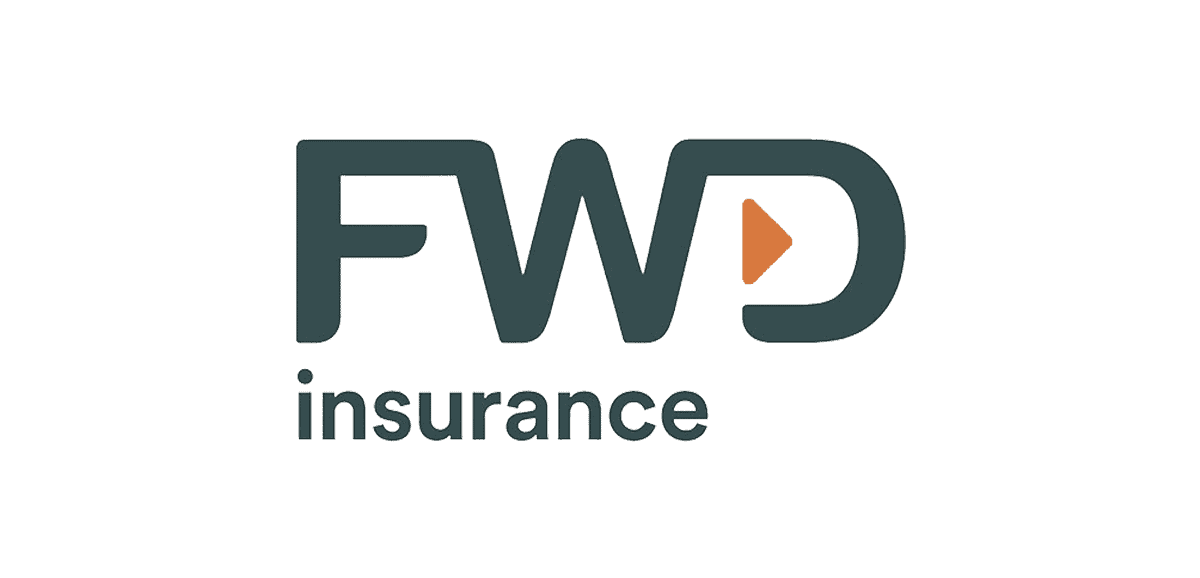
A new winner – FWD Invest First Plus – takes this spot this year.
Why?
Unlike every other regular premium investment plan in Singapore that charges you based on your total account value yearly, FWD Invest First Plus charges you based on your annualised premiums.
Here’s the formula given for the Initial Account Charge:
A% / 12 x Annualised regular premium x N,
Where
- N is your current policy year,
- A% ranging from 1% to 1.8%, depending on your premium payment term.
Assuming you take the 30-year premium payment term and invest $1,000/month, you only pay 1% per year of your annualised premium in the first year!
In your 30th year, you only pay 30% of your annualised premium.
That’s crazy – given that other ILPs will easily charge you 2.5% of your total account value.
There is also the Policy Charge that kicks in after 2 years: 1.2% x annualised regular premium x N
Where N is your current policy year.
Similar to the Initial Account Charge, this is only a fraction of what you’ll be paying – meaning more of your hard-earned money is funnelled to your investments (say hello to fancy living!)
The calculation and exact percentage of fees you’re paying on average is a little difficult to calculate, but rest assured that we spent hours building an Excel Sheet (boring) to calculate – and this is definitely the lowest.
So if you want a bang for your buck, the FWD Invest First Plus is for you!
Best ILP with the Most Flexibility
If you’re looking at a plan which gives you greater flexibility, you’d want to look at the MIP, riders available, whether they allow fund switching easily, and if they allow premium holidays and partial withdrawals.
Policy | Minimum Investment Period (MIP) (Years) | Premium Holidays | Partial Withdrawals | Top-Ups | Vary Premiums | Basic Coverage | Riders Available |
Prudential PRUSelect Vantage | 5 | Only after 2 years, length subject to your account value | Yes, $1,000 minimum | Yes, minimum $1,000 | Reduce only, after 24 months | Death | -Early Critical Illness (ECI) Waiver -Critical Illness (CI) Waiver -Payer Security -Payer Security Plus -Early Payer Security -PRUSmart Lady -Fracture Care PA -ECI |
HSBC Life Wealth Accelerate (Previously AXA Wealth Accelerate) | 10 | Yes, after 2 years, up to 60 months | Yes, $1,000 minimum | Yes, minimum $100 monthly | No | Death Terminal Illness | NA |
HSBC Life Pulsar (Previously AXA Pulsar) | 5 | Yes, 3 – 5 years, depending on MIP | Yes, $1,000 minimum | Yes, minimum $5,000 | Yes, after 36 months | Death | NA |
Great Eastern GREAT Wealth Advantage | 10 | Yes, unlimited after 10 years, otherwise length subject to account value | Yes, $500 minimum | Yes, minimum $1,000 | Reduce only, after 10 years | Death Terminal Illness Total Permanent Disabiity | -CI -Disability |
Prudential PRUSelect | 10 | Only after 2 years, length subject to your account value | Yes, $1,000 minimum | No | Yes, amount subject to Prudential | Death | -ECI Waiver -CI Waiver -Payer Security -Payer Security Plus -Early Payer Security -PRUSmart Lady -Fracture Care PA -ECI |
AIA Pro Achiever | 10 | Yes, unlimited after 10 years, otherwise length subject to account value | Yes, $1,000 minimum | Yes, minimum $1,000 | Reduce only, after 11 years | Death | -Critical Protector Waiver of Premium -Early Critical Protector Waiver of Premium -Early Critical Protector Payor Benefit -Payor Benefit -Payor Benefit Comprehensive Special |
Tokio Marine #goTreasures | 10 | Only after 2 years, length subject to your account value | Yes, $500 minimum | Yes, minimum $50 monthly | Yes, after 36 months | Death | NA |
Tokio Marine goClassic | 5 | Only after 2 years, length subject to your account value | Yes, $500 minimum | Yes, minimum $50 monthly | Yes, after 24 months | Death | -Cancer Waiver -ECI Waiver -CI Waiver -Payer Benefit -Spouse Rider -Enhanced Payer Benefit -Enhanced Spouse Rider |
Manulife InvestReady III | 5 | Length subject to account value | Yes, $500 minimum | Yes, minimum $2,500 | Yes, after 12 months | Death Terminal Illness | -TI Waiver -CI Waiver -Cancer Waiver -TPD Waiver |
Singlife Savvy Invest | 3 | Length subject to account value | Yes, $500 minimum | Yes, minimum $1,000 | Yes, after 36 months | Death Terminal Illness | -Payer Premium Waiver -CI Waiver |
FWD Invest First Plus | 15 | After 5 years, length subject to account value | No | Yes, minimum $3,000 | No | Death | NA |
After some pondering, we shortlisted the AIA Pro Achiever and the Tokio Marine goClassic as they have the top 2 highest number of riders and every feature listed in the table above.
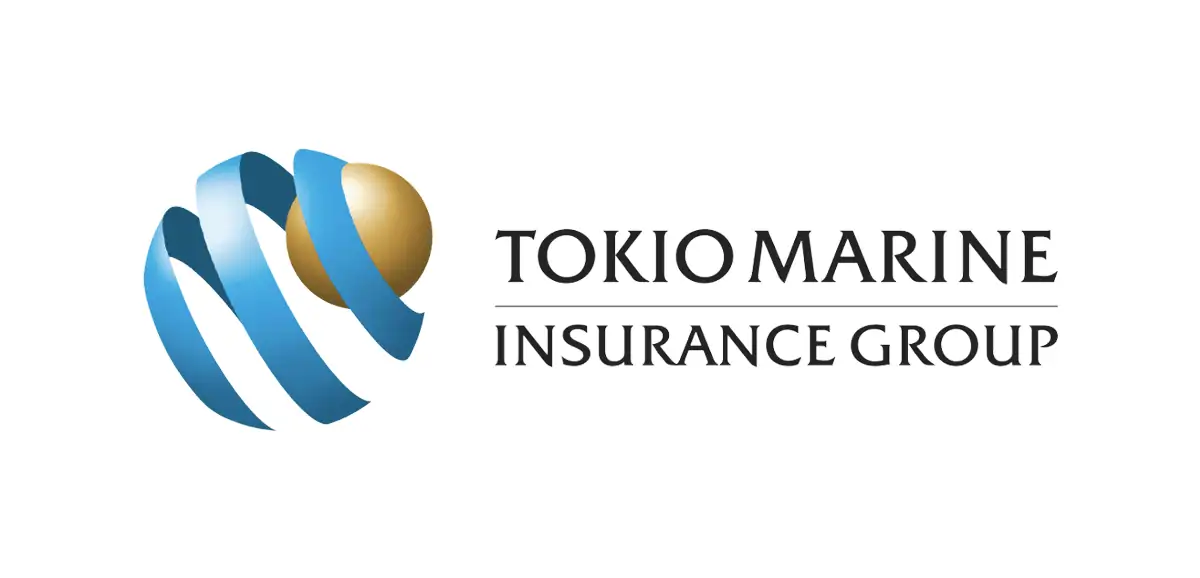
In this spot, we gave the Tokio Marine goClassic the award for the best investment plan with the most flexibility.
You can:
- Make unlimited fund switches,
- Have lower withdrawal minimums,
- Have lower top-up minimums,
- Can vary premiums after the first 2 years, and
- Have unlimited premium holidays after the first 2 years.
The minimum investment period starts at 5 years and goes up all the way to 25 years, so choose an MIP that fits your needs!
You also have a selection of up to 7 riders to add to your policy – giving you more flexibility in your investment planning.
Why would you add riders to your investment plan?
Easy, say you add the ECI waiver to your Tokio Marine goClassic plan. If you’re struck with any of the covered ECI (touchwood), your investments are waived until your policy ends!
That’s one less worry while you spend your time recovering!
Best ILP with the Most Flexible Investment Periods
We understand that sometimes you might be looking for flexibility in other aspects of an investment plan, specifically the minimum investment periods.
This is one of the biggest pains of an ILP as they can lock up your investments for up to 30 years (ain’t nobody got time for that).

This is where the Manulife InvestReady III comes to secure another spot in our list of the best ILPs in Singapore.
With the Manulife InvestReady III, you have up to 9 combinations for how you’d like to structure your plan.
Manulife InvestReady III has the Minimum Investment Period and the Minimum Payment Period.
- Minimum Investment Period: How long your money is to be locked for.
- Minimum Payment Period: How long you’ll need to make investments for.
Unlike other ILPs, the Minimum Investment Period usually equals the Minimum Payment Period.
So if you have a 20-year plan, you’re expected to invest for 20 years continuously.
Not for the Manulife InvestReady III.
You can opt for a single premium or regular premium option with its respective MIP and Minimum Payment Period.
Here are the available combinations available:
Policy | Minimum Investment Period | Minimum Payment Period (Years) | Minimum Investment Amount ($) | ||||
Currency | Annual | Semi-Annually | Quarterly | Monthly | |||
5 Years Flexi 1 | 5 | 1 | SGD | 25,000 | – | – | – |
5 Years Flexi 1 | 5 | 1 | USD | 25,000 | – | – | – |
6 Years Flexi 2 | 6 | 2 | SGD | 10,000 | – | – | – |
7 Years Flexi 5 | 7 | 5 | SGD | 12,000 | 6,000 | 3,000 | 1,000 |
10 Years Flexi 3 | 10 | 3 | SGD | 6,000 | 3,000 | 1,500 | 500 |
10 Years Flexi 5 | 10 | 3 | SGD | 6,000 | 3,000 | 1,500 | 500 |
10 Years Flexi 8 | 10 | 8 | SGD | 6,000 | 3,000 | 1,500 | 500 |
13 Years Flexi 10 | 13 | 10 | SGD | 3,600 | 1,800 | 900 | 300 |
20 Years Flexi 10 | 20 | 10 | SGD | 2,400 | 1,200 | 600 | 200 |
Starting at a 5-year MIP with just a single premium, you can choose to have up to a 20-year MIP with 10 years of regular investing!
According to our partners, the 10-Year Flexi 5 option is among the most popular choices.
Many are confident that they can invest for at least 5 years, while having a 10-year MIP forces them to be financially responsible and only use their funds for the milestones they’ve set.
They often also see individuals interested in getting the 10-Year Flexi 3 and the 20-Year Flexi 10 at the same time.
The 10-Year Flexi 3 is often used for goals they’ve set for themselves in 10 years, while the 20-Year Flexi 10 is for their retirement funds.
So if flexible investment periods are important for you – then look no further – the Manulife InvestReady III is the best there is.
Best ILP with the Highest Potential Returns (Option 1)
If investing is about the money, money, money (sorry Jessie J), and you want an investment plan that can make you the most money, our first option is the FWD Invest First Plus.

Based on our calculations, the FWD Invest First Plus ranks first, giving you the highest potential returns of 542% over 30 years.
This can be attributed to 2 things – low fees and the funds available.
I believe we’ve covered the fee structure above, but as a recap, the FWD Invest First Plus has the lowest fees after comparing it against other ILPs in the market.
They use a percentage of your annualised premiums as a base instead of a percentage of your total account value, which in the long run, makes a huge difference.
Also, the FWD Invest First Plus invests directly into unit trusts instead of their own insurer subfund, saving you an additional layer of fees that many other ILPs charge an extra for.
They also give you access to accredited investor funds that are out of reach to most investors in Singapore.
These funds are expected to perform better than retail funds due to 2 things – lower fees and higher returns than usual.
With many things going on for it, the FWD Invest First Plus is definitely for those looking to get the highest potential returns on their investments.
Best ILP with the Highest Potential Returns (Option 2)
Say it’s not always about the money, money, money (haha), but you still want to obtain the highest potential returns, then the Singlife Savvy Invest would pique your interest.
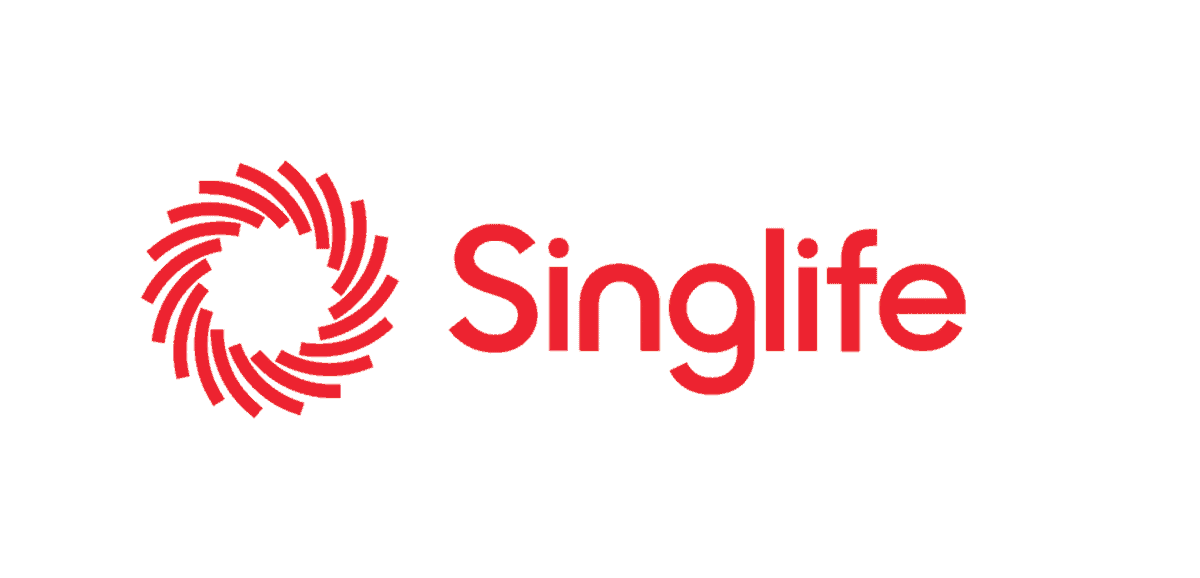
Unlike the FWD Invest First Plus, which has a minimum investment period of 15 years and a $300/month minimum investment, the Singlife Savvy Invest starts you at only 3 years with only $200/month.
Yes, our calculations are based on 20 years of regular investing and another 10-year period of accumulation, so the minimum investment period doesn’t matter much here.
But at least you have another option to go for if you think 20-30 years of regular investing is too long for your liking.
You can also start at only $200/month and increase/decrease them after your first 3 years, giving you some flexibility.
The Singlife SavvyInvest also charges you only 2.5% of your account value per year in fees for your first 10 years and only 0.65% per annum thereafter.
This is great for mid to long-term investments.
Also, the Singlife SavvyInvest invests directly into unit trusts instead of their own subfunds, saving you additional fees.
Similar to the FWD Invest First Plus, you also get access to accredited investor funds – a potential for higher returns, making this the next best alternative.
Some would say the Manulife InvestReady III would be a better option as it’s more flexible (since it’s not all about the money).
If flexibility is important to you, I say go ahead and choose the Manulife InvestReady III.
But I still stand and say that Option 2 should be the Singlife SavvyInvest.
Why?
Because of the accredited investor funds. Theoretically, this gives you a higher return potential than Manulife’s retail funds.
Best Investment Plan for Coverage
In this category, the Prudential PRUSelect Vantage wins as they have the widest range of riders and coverage for death.
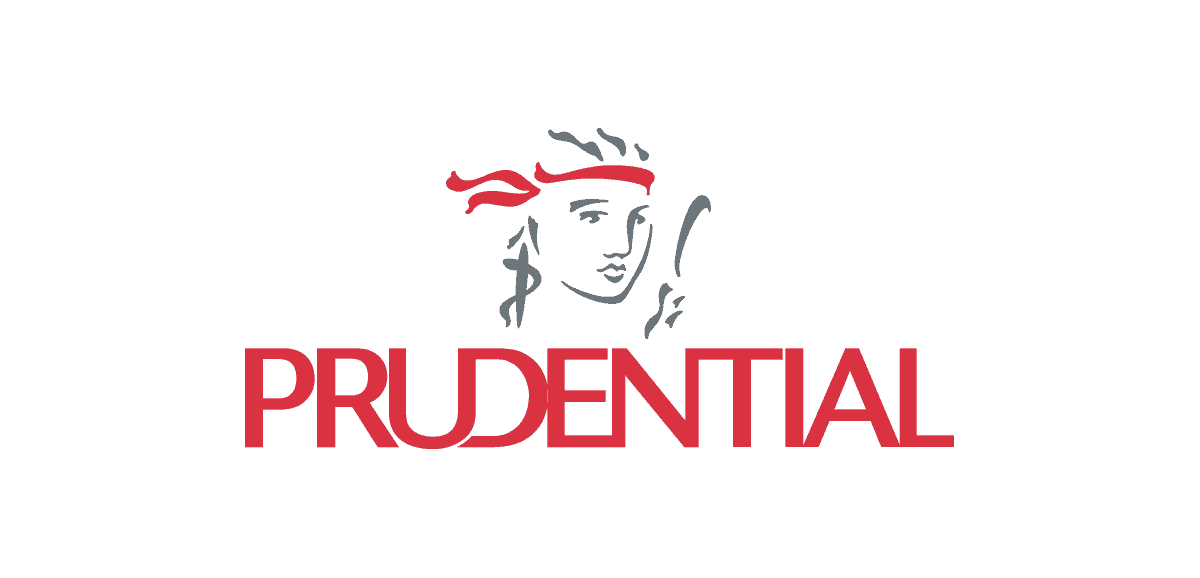
The riders offered are comprehensive; you can get up to 8 riders to cover for:
- ECI Waiver
- CI Waiver
- Payer Security
- Payer Security Plus
- Early Payer Security
- PRUSmart Lady
- Fracture Care PA
- ECI
Do note that the Prudential PRUSelect Vantage does not cover terminal illness and TPD, which the GREAT Wealth Advantage provides.
The only reason we didn’t select the GREAT Wealth Advantage is the lack of information available for the riders they offer.
Investment-linked policies are typically not recommended for those interested in seeking out thorough life protection, so consider a term plan or whole life insurance for better coverage.
But we understand that you might be looking to mitigate all your risks, so if this is you, the PRUSelect Vantage is for you.
Best ILP for Those Looking for Dividends
Should you be interested in receiving dividends, the Manulife InvestReady III, Tokio Marine #goTreasures, and the FWD Invest First Plus are the only plans that offer a monthly dividend pay-out, in which you have a choice to either cash it out or re-invest them.

However, we’ll have to select the Manulife InvestReady III as the clear winner.
Mostly because they are the first ILP to do this and have track records, while the Tokio Marine #goTreasures was only released in mid-2021, while the FWD Invest First Plus was only released in early-2023.
Best Single Premium ILP
Let’s say you have been saving up money in your bank account and have a large amount.
You already have emergency funds set aside and want to invest excess amounts.
In this case, you might consider a single premium investment plan.
Let’s first explore your options:
Policy | Minimum Investment | Minimum Investment Period (MIP) (Years) | Regular or Single Premium? | Source of Funds | Compulsory Fees & Charges | Type of Funds | Partial Withdrawals | Top-Ups | Basic Coverage | Riders Available |
Manulife InvestReady III | $25,000 or $200/month | 5 | Single Premium Regular Premium | Cash | During MIP: 1.4% to 2.5% p.a. After MIP: 0.7% to 1% p.a. $5/month (If you’re investing below certain amounts) | Retail | Yes, $500 minimum | Yes, minimum $2,500 | Death Terminal Illness | -TI Waiver -CI Waiver -Cancer Waiver -TPD Waiver |
Manulife Manulink Investor (II) | $5,000 | 0 | Single Premium | Cash, SRS, CPF | Cash/SRS: 3% premium charge + 1.95% p.a CPF: Up to 1.95% p.a. | Retail | Yes, $500 minimum | Yes, minimum $500 per subfund | Death Terminal Illness | NA |
NTUC Income WealthLink | $10,000 | 0 | Single Premium | Cash, SRS | 3.5% premium charge + up to 2% p.a. | Retail | Yes, $500 minimum | Yes, minimum $2,500 | Death | NA |
HSBC Life Wealth Invest (Previously AXA Wealth Invest) | $10,000 | 0 | Single Premium | Cash, SRS, CPF | Cash/SRS: Up to 5% premium charge CPF: Up to 1.6% p.a. | Retail | Yes, $100 minimum | Yes, minimum $500 | Death | NA |
AIA Invest Easy | $12,000 | 0 | Single Premium | Cash, SRS, CPF | 3% premium charge + up to 3% p.a. | Retail | Yes, $1,000 minimum | Yes, minimum $300 monthly | Death | NA |
Prudential PRUSelect Vantage Premier Review | $50,000 | 2 | Single Premium | Cash, SRS | 2.5% premium charge + 0.8% p.a. | Retail | Yes, $1,000 minimum | Yes, minimum $20,000 | Death | NA |
Great Eastern Great Prestige Portfolio | $20,000 or $250/month | 0 | Single Premium Regular Premium | Cash, SRS | 3% premium charge + up to 1.7% p.a. | Retail | Yes, $1,000 minimum | Yes, minimum $500 | Death | NA |
Great Eastern GREAT Invest Advantage | $5,000 or $100/month | 0 | Single Premium Regular Premium | Cash, SRS, CPF | Cash/SRS: 3% premium charge + up to 3.25% p.a. CPF: Up to 3.25% p.a. | Retail | Yes, $500 minimum | Yes, minimum $1,000 | Death Terminal Illness | NA |
Prudential PRULink InvestGrowth | $6,000 or $300/month | 0 | Single Premium Regular Premium | Cash, SRS, CPF | Cash/SRS: Up to 4.5% ILP premium charge + up to 5% fund premium charge + up to 1.5% p.a. CPF: 0% ILP premium charge + up to 5% fund premium charge + up to 1.5% p.a. | Retail | Yes, $1,000 minimum | Yes, minimum $2,000 | Death | NA |
Unlike regular premium ILPs, you don’t need to look at premium holidays or pay too much attention to the minimum investment periods.
Rather, I would look at the following:
- Minimum investment amounts,
- Total fees,
- Funds available,
- Availability of partial withdrawals,
- Ability to make top-ups,
- Basic coverage, and
- Riders available.
In this case, I believe the HSBC Life Wealth Invest to be the best single premium ILP in Singapore.

It lets you invest your cash, SRS, and CPF funds, starting from only $10,000. This should be achievable for most looking to invest a lump sum.
There are no MIPs, you can make partial withdrawals of minimally $100, and make top-ups of minimally $500.
I have to say that the 5% premium charge is pretty steep – the highest amongst all single premium ILPs.
However, you only incur this charge if you make cash and SRS investments.
The good thing about this policy is that if you invest via cash or SRS, you get access to retail and accredited investor funds – which, by now, you should know brings the moolah.
There are also no additional fund management fees, which most other single premium ILPs might charge.
And on the ILP level, no recurring yearly fees are charged on your account value.
These 3 combined (and the achievable $10,000 lump sum) easily make the HSBC Life Wealth Invest the best in this category due to the lowest fees and the highest potential return.
Best SRS ILP
Got too much funds in your SRS account and looking to make more than the measly 0.05% per annum returns?
Well, you can choose to invest them in an ILP!
Let’s first see what your options are:
Policy | Minimum Investment | Minimum Investment Period (MIP) (Years) | Regular or Single Premium? | Source of Funds | Compulsory Fees & Charges | Type of Funds | Partial Withdrawals | Top-Ups | Basic Coverage | Riders Available |
Manulife Manulink Investor (II) | $5,000 | 0 | Single Premium | Cash, SRS, CPF | Cash/SRS: 3% premium charge + 1.95% p.a CPF: Up to 1.95% p.a. | Retail | Yes, $500 minimum | Yes, minimum $500 per subfund | Death Terminal Illness | NA |
NTUC Income WealthLink | $10,000 | 0 | Single Premium | Cash, SRS | 3.5% premium charge + up to 2% p.a. | Retail | Yes, $500 minimum | Yes, minimum $2,500 | Death | NA |
HSBC Life Wealth Invest (Previously AXA Wealth Invest) | $10,000 | 0 | Single Premium | Cash, SRS, CPF | Cash/SRS: Up to 5% premium charge CPF: Up to 1.6% p.a. | Retail | Yes, $100 minimum | Yes, minimum $500 | Death | NA |
AIA Invest Easy | $12,000 | 0 | Single Premium | Cash, SRS, CPF | 3% premium charge + up to 3% p.a. | Retail | Yes, $1,000 minimum | Yes, minimum $300 monthly | Death | NA |
Prudential PRUSelect Vantage Premier Review | $50,000 | 2 | Single Premium | Cash, SRS | 2.5% premium charge + 0.8% p.a. | Retail | Yes, $1,000 minimum | Yes, minimum $20,000 | Death | NA |
Great Eastern Great Prestige Portfolio | $20,000 or $250/month | 0 | Single Premium Regular Premium | Cash, SRS | 3% premium charge + up to 1.7% p.a. | Retail | Yes, $1,000 minimum | Yes, minimum $500 | Death | NA |
Great Eastern GREAT Invest Advantage | $5,000 or $100/month | 0 | Single Premium Regular Premium | Cash, SRS, CPF | Cash/SRS: 3% premium charge + up to 3.25% p.a. CPF: Up to 3.25% p.a. | Retail | Yes, $500 minimum | Yes, minimum $1,000 | Death Terminal Illness | NA |
Prudential PRULink InvestGrowth | $6,000 or $300/month | 0 | Single Premium Regular Premium | Cash, SRS, CPF | Cash/SRS: Up to 4.5% ILP premium charge + up to 5% fund premium charge + up to 1.5% p.a. CPF: 0% ILP premium charge + up to 5% fund premium charge + up to 1.5% p.a. | Retail | Yes, $1,000 minimum | Yes, minimum $2,000 | Death | NA |
To select the best SRS ILP, I recommend taking a look at the following factors:
- Minimum investment,
- Total fees,
- Funds available,
- Ability to make top-ups,
- Basic coverage, and
- Available riders.
I don’t consider partial withdrawals that important – since you can’t get your SRS payments until you reach retirement age anyway.
Considering all the above factors, I believe the HSBC Life Wealth Invest once again wins this spot.

As previously mentioned, the combination of
- Retail + accredited investor funds,
- No ILP level fees,
- No additional fund management fees, and
- Low minimum investment of just $10,000
This makes the HSBC Life Wealth Invest an extremely attractive option for you to invest your SRS funds in the long term.
Other alternatives don’t even come close due to their recurring annual fees.
Best CPF ILP
Like your SRS account, you might have excess CPF funds in your account that you wish to invest – or you think you can beat CPF’s risk-free interest rates.
You then might consider investing it via an investment plan – which we will breakdown your options here:
Policy | Minimum Investment | Minimum Investment Period (MIP) (Years) | Regular or Single Premium? | Source of Funds | Compulsory Fees & Charges | Type of Funds | Partial Withdrawals | Top-Ups | Basic Coverage | Riders Available |
Manulife Manulink Investor (II) | $5,000 | 0 | Single Premium | Cash, SRS, CPF | Cash/SRS: 3% premium charge + 1.95% p.a CPF: Up to 1.95% p.a. | Retail | Yes, $500 minimum | Yes, minimum $500 per subfund | Death Terminal Illness | NA |
HSBC Life Wealth Invest (Previously AXA Wealth Invest) | $10,000 | 0 | Single Premium | Cash, SRS, CPF | Cash/SRS: Up to 5% premium charge CPF: Up to 1.6% p.a. | Retail | Yes, $100 minimum | Yes, minimum $500 | Death | NA |
AIA Invest Easy | $12,000 | 0 | Single Premium | Cash, SRS, CPF | 3% premium charge + up to 3% p.a. | Retail | Yes, $1,000 minimum | Yes, minimum $300 monthly | Death | NA |
Great Eastern GREAT Invest Advantage | $5,000 or $100/month | 0 | Single Premium Regular Premium | Cash, SRS, CPF | Cash/SRS: 3% premium charge + up to 3.25% p.a. CPF: Up to 3.25% p.a. | Retail | Yes, $500 minimum | Yes, minimum $1,000 | Death Terminal Illness | NA |
Prudential PRULink InvestGrowth | $6,000 or $300/month | 0 | Single Premium Regular Premium | Cash, SRS, CPF | Cash/SRS: Up to 4.5% ILP premium charge + up to 5% fund premium charge + up to 1.5% p.a. CPF: 0% ILP premium charge + up to 5% fund premium charge + up to 1.5% p.a. | Retail | Yes, $1,000 minimum | Yes, minimum $2,000 | Death | NA |
Unlike other ILPs, you need to pay closer attention to your choice of ILP when investing your CPF monies.
Here’s what I suggest looking at:
- Minimum investment,
- Minimum investment period,
- Total fees,
- Funds available,
- Ability to make top-ups,
- Availability of partial withdrawals,
- Basic coverage, and
- Availability of riders.
I mention this because, unlike SRS investment plans, you might need your CPF funds back for any purchases you make before retirement age.
Thus, the minimum investment period and partial withdrawals become more important here.
Also, CPF offers up to 4% in risk-free interest rates – so your investments will need to outperform this – making the available funds and total fees a critical aspect of your choice.
To recap, you need to beat 2.5% interest rate if you invest from your CPF Ordinary Account and 4% from your CPF Special Account.
With all these in consideration, the HSBC Life Wealth Invest is the best ILP to invest your CPF funds.

However, the reasons for this are slightly different from previous ones.
Firstly, for CPF investments, you only have access to insurer subfunds, which comes with an additional layer of fund management fees.
Your choice of funds is also heavily restricted by the CPF Board as they don’t want you to negligently invest your CPF money.
So no accredited investor funds here (sad).
So the performance of the ILP subfunds – considering the fund management fees – is crucial here.
I checked the funds offered by the 5 ILPs above – with the exception of AIA Invest Easy (not available online) – and found that the HSBC Life Wealth Invest has the widest range of funds to choose from.
Not only that, but it also has the best track record for consistently producing decent returns after deducting the fund-level fees.
This, plus no ILP level fees, means that your potential returns are much higher with the HSBC Life Wealth Invest – giving you a chance to beat the risk-free interest rates.
What to look out for when purchasing Investment-Focused ILPs?
Minimum Premiums
There are 2 types of ILPs – single premium ILPs and regular premium ILPs. While most opt for a regular premium ILP which allows them to make monthly or annual payments throughout the policy term, you can also opt for a lump sum payment with single premium ILPs.
With regular premium ILPs, there are minimum premiums to be paid. Depending on your policy of choice and your total investment term, your premiums may vary. Across different policies, the lowest premium you can get is a monthly payment of $200 and can range up to about $750 or more.
Most policies also allow you to increase your premiums, should you decide you want to. However, there is a minimum increment amount stipulated by the insurance company as well.
Failing to meet the payment punctually may result in you being excluded from future bonuses or additional fees.
Minimum Investment Periods
Due to the nature of these investments, most policies implement a minimum commitment period of 5 years, spanning to 25 years. However, there are some policies such as the Manulife InvestReady Wealth II which has a shorter commitment period of only 3 years.
As such, to ensure you can receive substantial returns from your ILP, you need to be confident that you can commit throughout the full period.
If you wish to extend your policy term, most plans allow you to do so as well. However, do note that most payment terms have an interval of 5 years – meaning to say, you will not be able to extend your policy by anything less than that.
Availability of Riders
Apart from the basic coverage you will receive from your plan, there are also options to purchase riders for your policy. Of course, that also means you will have to pay more for these additional benefits.
Depending on the company and flexibility of the plan, there are different types of riders being offered. Some of the most common ones include riders for cancer waiver, critical illnesses waiver, and payor benefit.
For a quick understanding, cancer and critical illnesses waivers will either pause or waive any remaining premiums for you to enable you to focus on treatment and recuperation.
In the event where you pass away or are permanently disabled, the payor benefit will pay for the premiums of your loved ones as well. As this is a general guideline, specific terms and conditions also vary for different policies.
Death & TPD definitions
When getting covered by ILPs, death is the most common basic coverage you will receive from your policies. However, the claims might vary more strictly or broadly according to different policies. Some key factors to note when looking out for these terms are:
- Whether the death was caused by an accident
- Whether the person insured passes away within a stipulated period from accident date
- Age of passing of person insured
In some cases, there are also policies also allow for total and permanent disability (TPD) coverage, categorised into 2 different types of TPD – presumptive TPD and non-presumptive TPD.
The former refers to total loss of sight in one or both eyes, or loss of one or two limbs. Non-presumptive TPD, on the other hand, refers to a disability that leaves the policyholder incapable of working for income.
Depending on what types of life coverage you are looking for, this segment may be something to look into.
Compulsory Fees
With the assumption that you will be committing to your plan without any changes made, you will only be incurring compulsory fees from your policy. With the varying types of compulsory fees, this is something to consider and compare before committing to a plan.
Typically, the compulsory fees may include two or more of the following, and will decrease after about a decade of committing to your plan:
- Fund Management – depending on type of funds chosen, can be up to 1.75% per annum
- Initial Charge – fees payable for starting your account and establishing your policy
- Policy Charge – fees payable for maintaining your policy
Editor’s Note
If the policy invests directly into the funds, the fund management fees are already calculated in the returns you see and you will only incur the initial & policy charges.
Should the insurance company invests through its own funds, you will be charged an additional layer of fee – the fund management fee. This will be covered in the later section.
Further reading: Funds vs ILP sub-funds
Bonuses
Funds Offered
Now, you may be wondering – why do I have to pay compulsory fees for ILPs when I can directly invest into funds yourself?
The most direct answer for this lies with the credibility and convenience an insurance company brings for you.
And because insurance companies have the team and capability to invest in large amounts, they get access to funds that retail investors do not have access to.
Such funds are usually aggressive with higher potential returns that will be balanced with other funds to manage your risks – allowing you to get higher returns for the risks you take.
Investing into Company’s Sub-Funds VS Directly into Sub-Funds
When talking about funds, it’s important to note if you’re investing via the insurer’s sub-funds or directly into them. This will make a difference in the returns that you see from your policy.
The good thing company sub-funds are also normally managed by a team or firm apart from where the units are being held. For example, an insurance company partners with Blackrock – a world-renowned asset management company.
With the credibility of these professional firms who also handle global clients, it perhaps gives you greater ease of mind knowing your money is in the hands of fund managers who are experienced in the industry.
However, the downside to this is that you’re paying an additional layer of fund management fees with no guarantee of making higher returns than investing directly into the sub-funds.
These fees can go up to an additional 1.75% per annum that you have to pay for.
Savvy retail investors usually recommend purchasing directly into sub-funds if you’re investing in unit trusts just because of the additional costs that are not worth it.
So make sure to choose an ILP that invests directly into the unit trust instead of their own subfunds.
Premium Holidays
Premium holidays are periods when you can choose to temporarily stop paying from your premiums, so long as your account has sufficient value to do so. While this sounds like a flexible option, there are some conditions to look out for:
- The minimum required number of years you must have continuously and punctually paid for your premiums
- Whether there is a premium holiday charge
- Whether your riders are affected during your premium holiday
Bonuses
Throughout the term of your policy, you will be rewarded with a couple of bonuses to incentivise you for your commitment to the plan.
The main bonuses you will receive are initial bonuses (also called welcome bonus, or first-year bonus), as well as loyalty bonuses after you have committed to the plan for a minimum number of years.
Potential Returns
The returns you receive will be based on your commitment period, as well as the performance of the funds you choose to invest in.
Depending on your risk appetite and how much capital you have, you can choose from low to high-risk rating funds. Optimally, it will be good to have a mix of both high and low-risk funds to balance your portfolio well.
Additionally, it will also be good to do a little research on the funds that you are interested in to get a better idea of how they might perform over time, and if the companies might be affected by volatile development of events.
However, it is also important to understand that as ILPs, like all other investments, are ultimately reliant on market movements, you are not guaranteed high returns, or possibly even the amount you initially invested.
To reap the full benefits of returns, you are advised to commit till your plan fully matures after a couple of decades.
Fund Switching
Some policies allow the flexibility of switching funds, should you decide you want to allocate your units in other portfolios. While some companies allow you to do this without cost, there are some policies that require you to pay a small fee for fund switching.
Withdrawals
It is also good to find out if your policy allows for withdrawals. There are 2 types of withdrawals – partial and general withdrawals.
A partial withdrawal can be done upon request and allows you to receive a one-time payout. General withdrawals, on the other hand, is a stipulated withdrawal that you can perform at certain intervals of the year (e.g. yearly, half-yearly, monthly, etc). Do note that there might be charges for withdrawals.
Top-Ups / Increasing or Decreasing Premiums
As time goes, you will need to adjust how much you’re investing regularly.
Most of the time, you would want to increase as your salary increases, so making sure that you can increase your premiums, or at least make top-ups is important.
Otherwise, you might have to buy a new policy – which is advantageous to only your financial advisor and the insurance company.
Of course, the ability to reduce also gives you a sense of comfort knowing that you can reduce them when you need it.
The Financial Advisor
Often not talked about, your financial advisor plays a huge part in managing your investments and providing you with financial advice.
Many financial advisors claim that they are able to manage your investments due to their experience in managing for past clients.
Based on our experience, most financial advisors don’t even know how to pick individual stocks/bonds.
Their knowledge lies in knowing how to pick unit trusts based on the asset, sector, and geographic allocations, and the fees and past returns.
In my opinion, this is the most basic level that someone investing in unit trusts should know.
Often, financial advisors will mention that they have the support of their team and investment managers to assist them with this.
Though this still gives them an advantage over someone who doesn’t know how to invest, it’s still critical to understand if your advisor actually knows how to invest or is just trying to sell you something.
Ask for their performance track record for past clients and their own investments.
Ask their thought process on how they select their own investments and why they do it.
They don’t have to give you in depth answers, but the ability to give you sound reasoning on their choices will give you a rough gauge if he/she knows their stuff.
If you’re not sure, you can always talk to one of our partners – we make sure they actually know how to invest.
Conclusion
We hope that this compilation of the best ILPs in Singapore was useful in helping you decide what you should look for when getting an investment plan and selecting one that’s best for you.
After all, this information is purely based on opinion and shouldn’t be considered as financial advice.
If you require advice or a second opinion, do engage a financial advisor from our network.
These advisors were carefully selected to assess your needs and provide recommendations based on your needs.










